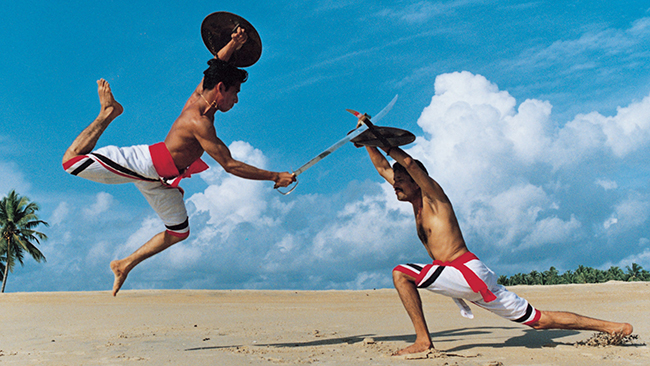Here are some key aspects of Kalaripayattu, the martial art of Kerala:
-
Historical Significance: Kalaripayattu has a rich history that dates back over a thousand years. It was traditionally practiced in specially designed training grounds known as "kalari" or "arena," which provided a space for warriors to train.
-
Physical Conditioning: The art emphasizes rigorous physical conditioning, including exercises, yoga, and stretching. Practitioners develop strength, flexibility, and agility to perform the techniques effectively.
-
Weaponry: Kalaripayattu incorporates a wide range of weapons, including swords, spears, daggers, and flexible weapons like the urumi (a sword with a flexible, whip-like blade). Weapon training is a fundamental aspect of the martial art.
-
Empty-Hand Combat: The art also includes techniques for empty-hand combat, such as strikes, kicks, grappling, and joint locks. Techniques like "kicks" or "meippayattu" are characterized by swift and precise movements.
-
Healing and Medicine: Kalaripayattu includes knowledge of Ayurvedic medicine, and practitioners are often skilled in traditional healing methods. Some techniques are used for healing and rejuvenation, making Kalaripayattu a holistic practice.
-
Mudra and Meditation: Mudras (hand gestures) and meditation are incorporated into the training to enhance concentration, focus, and mental strength.
-
Stances: Kalaripayattu includes a variety of stances, each serving specific defensive or offensive purposes. Practitioners learn to transition between stances smoothly.
-
Competition and Demonstrations: While Kalaripayattu was historically used for self-defense and warfare, today, it is also practiced as a performing art. Demonstrations and competitions showcase the art's diverse techniques and weaponry.
-
Preservation and Revival: In recent years, there has been a renewed interest in preserving and promoting Kalaripayattu. Schools and training centers are dedicated to passing on the knowledge and techniques to future generations.
Kalaripayattu is not only a martial art but also a cultural tradition that reflects the rich heritage of Kerala. It embodies principles of discipline, mental focus, and physical fitness. Practicing Kalaripayattu not only equips individuals with self-defense skills but also provides a holistic approach to well-being, making it a unique and valuable art form.




Comments (0)